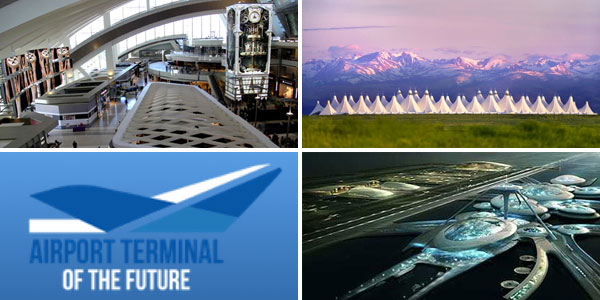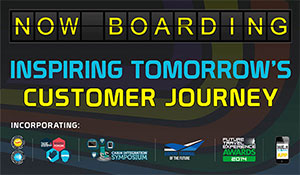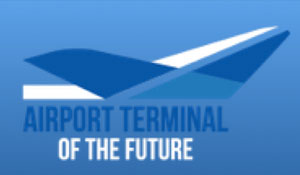
Improving the travel experience for passengers is usually seen as the responsibility of airports and airlines, but the important role that planners, designers and architects can play in defining a positive passenger experience should never be underestimated, especially when building a new facility.
Allowing passengers to interact with the infrastructure around them, giving an airport a true sense of place, and making the process of getting from check-in to departure gate as simple as possible are all vital elements that must be given great consideration when planning the airport terminal of the future.
One man who certainly knows all about this is Kiran Merchant, current CEO of airport planning and engineering specialists DY Consultants, and the previous Chief of Aviation Planning for the Port Authority of New York and New Jersey.
When FTE asked Merchant which area of the airport experience he thinks needs the most improvement from a passenger experience perspective, he offered the most frank of assessments. “I personally feel that the entire end-to-end airport experience needs a major overhaul,” he started. “How travellers get from their origin to destination needs fresh, outside the box thinking. Technological innovations have transformed our social behaviour and the aviation industry needs to adapt to these changes.”
An Apple Store-inspired airport lobby

Merchant, who will lead the Airport Terminal of the Future Members Forum at FTE Global 2014, explained that passengers now like to have more control over their own experience, and to move at a speed that suits their own preferences.
He continued: “Recent claims of futuristic thinking barely scrape the surface of what the future holds. Even though everyone in the aviation industry admits that “traditional” check-in is a thing of the past, we have yet to see a major shift in how this space is designed in newly designed terminals today. We talked in our last Airport Terminal of the Future workshop about, what if a terminal check-in lobby becomes more like a hotel lobby, a multi-purpose space, where one can transect, interact and relax at their own pace. Or like an Apple Store where the user is served at their own spot from presentation to final sale, and delivery is made at the same spot and the buyer is not expected to move from one place to the other.”
Among the key themes that could help achieve this vision, he explained, include:
- An experience customised to the individual traveller, whether that traveller be a premium customer, an experienced traveller, a family on vacation, or a customer requiring special assistance.
- A need to cross-utilise available information on the customer entering the facility between airlines, airport, and regulatory agencies in order to efficiently handle any transactions, anticipate their needs, accommodate their luggage, assess security threats, and customise their experience.
- A desire to design a free-flowing process in which the customer no longer views the experience as going from one sequential step to another.
In the Airport Terminal of the Future Members Forum in Las Vegas, these three themes will be built upon and delegates will be invited to help define which other themes should be prioritised, and how they can make a tangible difference to the passenger experience of the future.
‘Sense of place’ is critical
Merchant also lamented the fact that creating a “sense of place” is rarely given the level of attention it deserves. “Sense of place is extremely critical in terminal design and is frequently missed by the designers,” he stated.
“When you arrive at an airport, that is either the first or the last impression you carry of the place for the rest of your journey. Shapes, materials and finishes are usually one way designers have successfully created a sense of place. It is extremely difficult to go deeper than a mere superficial approach in creating a sense of place, though, because it requires understanding of the history, culture, trade and geographical information to create a holistic vision of the place.”
Clearly, airports embarking on building new terminals, or indeed developers constructing a greenfield airport, have a crucial role to play in sculpting the airport’s long-term identity and defining what passengers will experience in the terminal itself. As Merchant highlighted, it’s certainly not an easy task, but surely an airport terminal with a sense of place and happy passengers is far more desirable than a bland facility that travellers merely see as a necessary inconvenience in their journey from one city or country to another.
Learn all about the Airport Terminal of the Future at FTE Global 2014

Kiran Merchant, CEO of DY Consultants, will lead the Airport Terminal of the Future Members Forum at FTE Global 2014, which will take place in Las Vegas from 24-26 September and will include presentations from the likes of Halifax International Airport Authority, San Francisco International Airport and Gensler.
Airport Terminal of the Future provides a discussion forum on important issues that will drive the evolution of future terminal planning and design. Its mission is to explore and investigate future trends, design concepts and technological innovations that will change the way airport terminals will be designed and used by the next generation of passengers. Airport Terminal of the Future aims to improve the industry through a collegial discussion between leading professionals from around the world who offer a diverse range of perspectives, including airports, airlines, consulting firms, the supply chain and academia.
» View the full FTE ‘On the Ground’ conference agenda
» Register to attend FTE Global 2014







